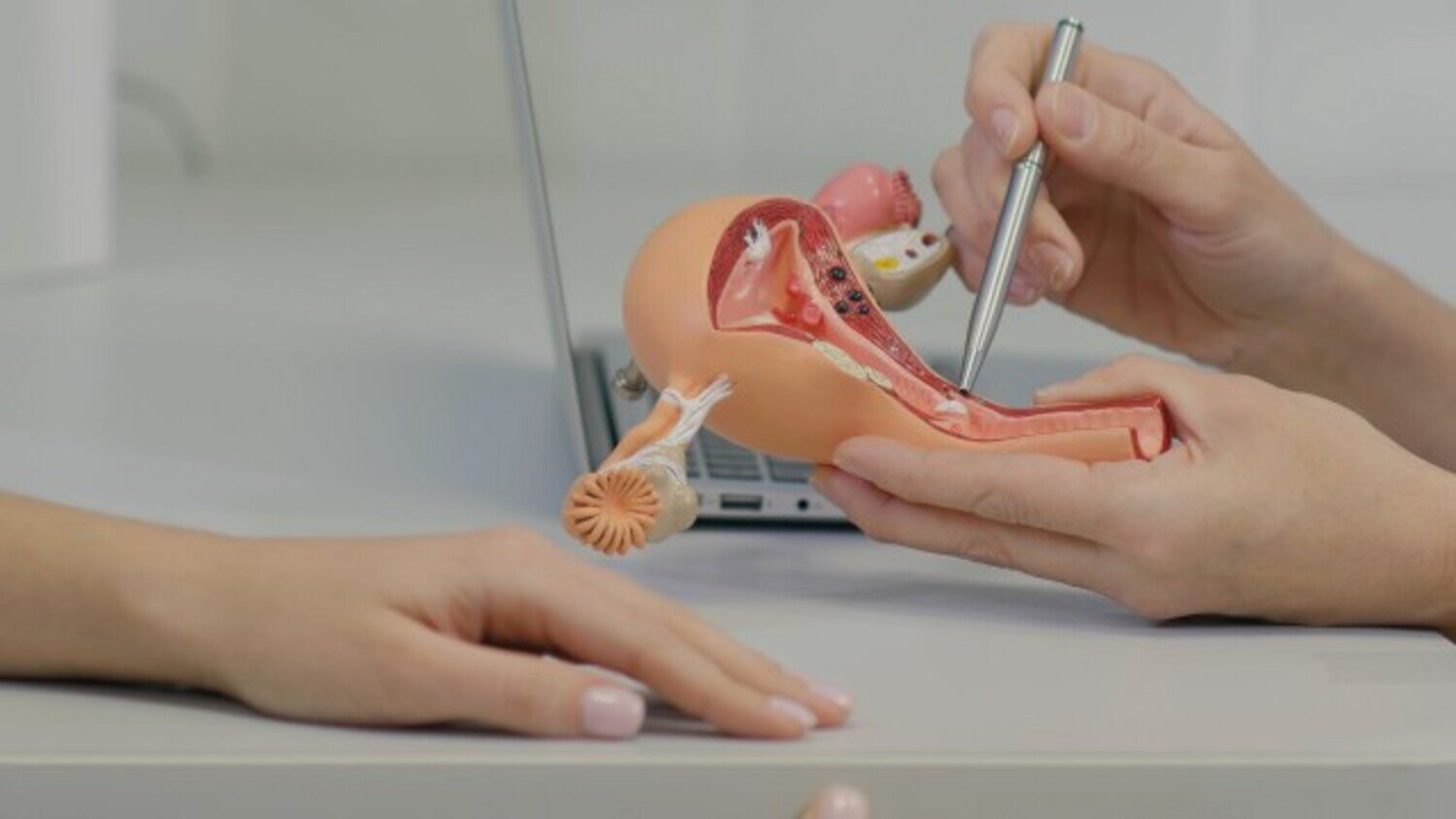Cervical mucus is also commonly known as vaginal discharge.
Cervical mucus can tell you a lot about your vaginal health and the state of your menstrual cycle. It’s common for the texture, colour and consistency to vary throughout the month, but what exactly do these changes mean? We’ll explain in this article.
Cervical mucus
The cervix is a muscular organ that serves as a passage between the vagina and the uterus. The fluid produced by the cervix, also known as cervical mucus, cervical fluid or discharge, has a very important function and can be a great source of information about your health and fertility. Cervical mucus changes consistency throughout the menstrual cycle to perform different functions. During the fertile periods of the month, cervical mucus can help sperm pass through the vagina and cervix to meet and fertilise an egg. Cervical mucus can also prevent sperm or other substances from entering the cervix at other times of the month. Cervical mucus can give you an indication of your fertile period.
How to check it
How can you tell what your cervical mucus looks like? There are several ways to check it, and it’s important to do it before you urinate. You can try inserting clean fingers into the vagina, dabbing the vagina with clean toilet paper or checking underwear for discharge. It may take a few weeks of cervical mucus monitoring to get used to the different types, but you’ll get the hang of it!
The different types
Cervical mucus changes throughout the menstrual cycle to help the body in different ways. It varies according to vaginal health, fertile periods, menstruation, etc. Here are some types of cervical mucus you may encounter and what they mean:
- Creamy
Cervical mucus can be white, smooth or creamy. This is often the case as ovulation approaches and may be due to an increase in oestrogen. This phenomenon is likely to occur a few days to a week before ovulation.
- Dry
Drier cervical mucus is often seen in the few days after menstruation. This phenomenon is more likely to occur in the last two weeks of the menstrual cycle or in the few days following menstruation.
- Sticky
Pasty or sticky cervical mucus may be slightly yellow or white. It probably doesn’t stretch very much. This is more likely to occur in the days following your period.
- Watery
Cervical mucus can sometimes be clear or watery. It is very moist to the touch. This is a sign of high water content and can be a sign of high fertility. Watery CM is likely to occur between days 10 and 18 of the cycle, around the time of ovulation.
- Slippery
Stretchy, slippery, clear cervical mucus is often called “egg-white discharge” and indicates that you are at or near your fertile period. This type of cervical mucus gives sperm the best chance of surviving inside the body for several days. Egg-white discharge occurs at the time of ovulation, which often takes place around day 14 of the menstrual cycle.
It’s important to note that these are estimates based on a 28-day menstrual cycle and may vary from person to person. The best way to understand your own cervical mucus is to monitor it regularly and note any significant trends you may observe. You can also use ovulation tests to get a more accurate idea of the state of your cycle. These are two methods commonly used in natural family planning to prevent or try to conceive.
What is white discharge?
Egg-white discharge is a term used to describe cervical mucus at the time of ovulation. Egg-white discharge is usually clear, slippery and stretchy, similar to egg whites, and is a sign that you are about to ovulate. If you’re trying to conceive, now is the best time to have sex!
What does the presence of a large quantity of egg-white cervical mucus mean?
Discharge is generally normal and healthy! Discharge is the body’s way of lubricating, cleaning and protecting the vagina and uterus. It is normal for discharge to change slightly in texture, quantity or colour during the menstrual cycle. If there is a major change in odour, consistency or colour, or if there is a burning sensation or discomfort associated with the discharge, you should consult a doctor to rule out the possibility of an infection.
White discharge refers to the clear, slippery, sticky cervical mucus around ovulation and is a completely normal bodily response to ovulation! The production of white discharge is your body’s way of helping sperm live and travel through the body long enough to meet and fertilise an egg. This reaction is triggered by hormonal changes and generally lasts about four days.
What other effects does it have?
Cervical mucus can be an excellent indicator of your health throughout the menstrual cycle and pregnancy. Many factors can have an impact on cervical mucus, including
Hormonal changes or contraception
- infections
- medication
- breast-feeding
- Lubricants or hygiene products
- diet
In some people, the cervical mucus changes regularly and noticeably, while in others this is not the case. If you have any specific questions about ovulation, discharge, menstruation, etc., talk to your doctor.
Key points to remember
- It is also known as cervical fluid, cervical discharge or discharge.
- The texture, colour and consistency of cervical mucus can vary depending on the menstrual cycle and other factors.
- You can check your cervical mucus by inserting one or two clean fingers into the vagina, dabbing with toilet paper or checking your underwear.
- During fertile periods, cervical mucus is more likely to be moist, slippery and clear, similar to egg white.
- Ovulation occurs around the 14th day of the menstrual cycle and constitutes the fertile period. Egg-white discharge is a sign of ovulation and means you can get pregnant.
- If the discharge smells bad, has a strange colour or consistency, or is accompanied by burning or discomfort, you should consult a doctor to rule out the possibility of an infection.
CHF 55.90 Original price was: CHF 55.90.CHF 33.54Current price is: CHF 33.54.
CHF 33.90 Original price was: CHF 33.90.CHF 20.34Current price is: CHF 20.34.
CHF 55.90 Original price was: CHF 55.90.CHF 33.54Current price is: CHF 33.54.
CHF 33.90 Original price was: CHF 33.90.CHF 20.34Current price is: CHF 20.34.








